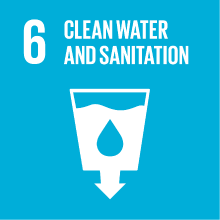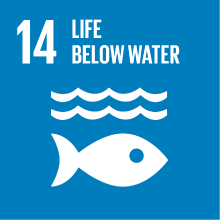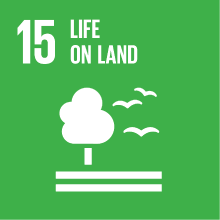SCANDINAVIAN LITERATURE 1
- Academic year
- 2024/2025 Syllabus of previous years
- Official course title
- LETTERATURE SCANDINAVE 1
- Course code
- LM30AB (AF:518091 AR:288758)
- Modality
- On campus classes
- ECTS credits
- 6
- Degree level
- Master's Degree Programme (DM270)
- Academic Discipline
- L-LIN/15
- Period
- 1st Semester
- Course year
- 1
- Moodle
- Go to Moodle page
Contribution of the course to the overall degree programme goals
The course Scandinavian Literature 1 (6 ects) is offered at the first year of the MA-programme in European, American and Postcolonial Languages and Literature (LLEAP), and is addressed to students who choose Scandinavian Studies, with Swedish as a language of specialization. As Scandinavian Literature 2 the same course is offered to students at their second year at the LLEAP-programme. And with the name “Scandinavian Literature” (6 ects), the same course is offered to the students who choose Swedish as their language of specialization at the MA-programme in Language Sciences. Students of Scandinavian studies at both MA-programmes, at their first or second year, form therefore a common class.
Expected learning outcomes
This course deals with “Scandinavian countryside and tramps on the threshold of modernity”, and it examines Swedish, Danish and Norwegian prose works written at the turn between the 19th century and the 20th century. Its purpose is to analyze the literary representation of the traditional rural world and the problem of its radical changes. Two nostalgic figures develop in the tradition, and they are both antithetical and interacting – the farmer and the tramp, the rooted man and the rootless one.
The aim of the course is to give an in-depth knowledge of the theme in its specific Swedish and Scandinavian version; the students should also learn to contextualize the studied works historically, socially and literarily, and to analyze their contents and forms.
Pre-requirements
The course is addressed to former students of Scandinavian studies at BA-level and is held in Swedish for the most part. In order to give Scandinavian literature 2, students must have passed Scandinavian literature 1. Texts will be examined in the original language, but translations will help. The professor will assist students when reading texts in Norwegian and Danish.
Contents
The threshold experience of passing from the ancient rural community, with its self-sufficient economy, to 20th century urban and industrial modernity, is a recurrent literary theme, and it is presented, with similarities and differences, by several Scandinavian authors. The Danish writer J.V. Jensen depicts, in his short stories, memorable figures of tramps and outsiders in the stern rural world of his Himmerland; the Norwegian fellow writer Knut Hamsun describes the wanderer of the Romantic tradition, but a wanderer who is also marked by 20th-century anxiety and disharmony. Hamsun’s quest wil lead him, in Markens grøde (The Growth of the Soil), to the praise of the rooted peasant as opposed to modern mobility. Finally, the Swedish writer Selma Lagerlöf depicts in her rural epic novel (but also tale of a journey and formation) Jerusalem, the contradictions of the end of the traditional country life and its meeting with modernity. The comparative work will help to highlight similarities and differences, as to both contents and form, between these works.
Referral texts
The studied works will be:
Johannes V. Jensen 1898-1910, selezione da Racconti (da Storie dello Himmerland), Milano, Fabbri, 1967 / Himmerlandshistorier: et udvalg, København, Gyldendal, 1981
Knut Hamsun 1906, Sotto la stella d’autunno, Milano, Iperborea, 1995 / Under høststjærnen, in K. Hamsun, Samlede verker, 4, Oslo, Gyldendal, 1976
Knut Hamsun 1909, Un vagabondo suona in sordina, Milano, Iperborea, 2005 / En vandrer spiller med sordin, in K. Hamsun, Samlede verker, 5, Oslo, Gyldendal, 1976
Knut Hamsun 1917, Germogli della terra, Torino, Einaudi, Torino, 2021 / Markens grøde, in Samlede verker, 10, Gyldendal, Oslo 2008
Selma Lagerlöf 1901, 1909, Jerusalem, Milano, Iperborea / Selma Lagerlöf, Jerusalem I-II, Stockholm, Bonniers
Students will prepare eight short stories from J.V.Jensen's collections of Himmerlandshistorier (check on Moodle), the novel Markens grøde by K. Hamsun, and a selection of passages from Hamsun's novels Under høststjærnen and En vandrer spiller med sordin, and S. Lagerlöf's novel Jerusalem.
Sources of literary history and literary criticism:
Maria Ludovica Koch, “La vita e l’opera di Johannes V. Jensen”, in J.V. Jensen, Premio Nobel per la letteratura 1944 (1967), pp. 21-53
Niels Ingwersen – Sven H. Rossel, “The early years of the new century”, in Sven H. Rossel (ed.), A History of Danish literature (1992), pp. 301-310
James McFarlane, “Knut Hamsun”, in Harald S. Næss (ed.), A History of Norwegian Literature (1993), pp. 184-194
Sara Culeddu, “Mito della casa, epica della stanzialità: Rileggere Markens grøde di Knut Hamsun”, in Andrea Binelli e Alessandro Fambrini (a cura di), Mitologi, mitografi e mitomani. Tracce del mito attraverso i secoli, Mimesis, Milano 2020), pp. 155-167
Assessment methods
The examination is oral, it lasts about 40 minutes and it is in Swedish (unless otherwise agreed upon, according to the needs). Some of the texts dealt with in the course are analysed and discussed from the point of view of forms and contents, and they are referred to their significant biographical, authorial, historical, cultural and literary contexts. One question may include reading and translating a passage from one of the works in the syllabus from Swedish / Scandinavian.
Type of exam
Teaching methods
The course offers mainly frontal lectures, but with moments of participatory learning, as students may, on a voluntary basis, present and discuss in class and in Swedish one of the works included in the syllabus (the 4 novels and the selection of short stories). If students present a book in class, they will not have to prepare it again for the examination.
Further information
If you have questions write to massimo.ciaravolo@unive.it. Please book a time at the professor's office hours writing an e-mail. Students who have not been able to attend lessons will get in touche with the professor for further explanation.
2030 Agenda for Sustainable Development Goals
This subject deals with topics related to the macro-area "Natural capital and environmental quality" and contributes to the achievement of one or more goals of U. N. Agenda for Sustainable Development



